by Nikos Salingaros (May 2019)
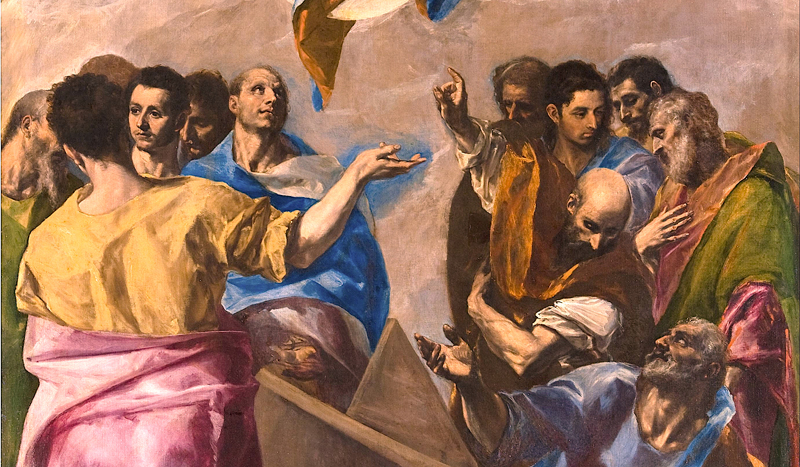
Detail from The Assumption of the Virgin, Domenikos Theotokopoulos (El Greco), 1579
Is beauty an intrinsic part of how the universe works? Christopher Alexander thinks so. This essay (delivered as a lecture via the Internet on 28 March 2019 to the Building Beauty Program, Sorrento, Italy) covers ideas from the first 50 pages of his book The Nature of Order, Book 4: The Luminous Ground, with my interpretations and comments. Alexander describes the connective process that leads to life’s greatest experiences, which are also felt from great architecture. Yet architectural culture and education avoid this intimate connection, and ignore the tools necessary to achieve living structure, which come from the humanistic and religious mind-sets in past societies. Part of the blame goes to the mechanistic model used in science to derive useful results, but which has now taken over and supplanted reality. The complexity of existence and life is thereby reduced. A strictly mechanistic worldview allows no place for an architecture that connects with our deepest self.
“There’s something animating this whole thing, and soul came before matter. Consciousness is not an emergent phenomenon of complicated matter; matter can get complex enough that it can tap into consciousness. There was consciousness before.” —Douglas Rushkoff in conversation with Russell Brand, The Tribe VS The Algorithm, March 2019, 58:30.
Conditions for Creating Great Art and Architecture
There are things made that are truly beautiful, and the reason we respond to them is because they possess living structure. Their similarity to natural forms is not superficial appearance—it’s much deeper. A person feels directly related to a particular detail, object, or setting in the same way we connect to a piece of nature—animate or inanimate—without thinking. This is how we link emotionally to another person, to an animal, or to a forest. We find ourselves responding to living structure viscerally, not intellectually.
Read more in New English Review:
• Houellebecq and the Popularity of the Crisis of Meaning
• Emily
• Jewtown: Poems of the Rise and Decline of Cork’s Jewish Community
We judge living structure based on visceral feeling rather than logical analysis. Our whole body connects with all its sensors to a beautiful artifact, building, or place. This sounds very much like artistic inspiration, yet it has philosophical implications. Christopher Alexander develops practical design 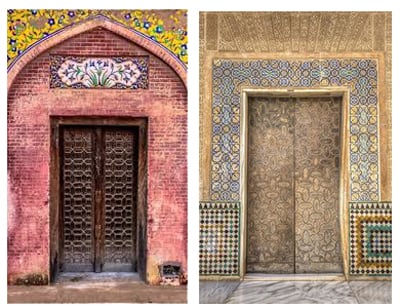 techniques in The Nature of Order that help to connect one’s self with whatever is being made. Every detail and every portion of an emerging whole must connect to one’s self. That’s the goal; otherwise what we make is dead.
techniques in The Nature of Order that help to connect one’s self with whatever is being made. Every detail and every portion of an emerging whole must connect to one’s self. That’s the goal; otherwise what we make is dead.
In creating living structure, Alexander finds himself searching for this intimate connection. How does one imbue a self-like quality into what one is making to make a direct one-to-one connection possible? Can we identify the “personal nature of existence” in the object itself? Alexander tries to feel this in the object, or space, imagining what exactly would establish such an intimate connection, before he even begins to make anything. He takes his time to discover the right conditions. He does not start the creative process before he feels this latent life there already. Stated differently, the creative process begins by establishing this personal connection with matter.
But this is not standard procedure. Society convinces us to ignore and suppress our inner instincts of connecting to life, because they seem primitive and even childish. This sensitivity is not considered “modern”. Architectural education teaches students to look outside themselves for expertise; whereas what’s truly important lies within themselves. Architecture schools thus cut students off from the sensitivity of their own body, which is what generates and judges living structure.
Yet the greatest human creations in history affect us precisely by connecting to us directly. What is universally loved has a very personal quality, and just because everyone else experiences it does not make it less personal. This personal quality is remarkable because all human beings invariably react in the same positive manner to living structure. Certainly, some individuals are conditioned by dominant culture not to like it, and even more frequently to disdain it, yet even their body cannot lie, and responds in the same way as the rest of us do.
A Dissonant Mechanistic Approach
We can make things that preserve and sustain the beauty of the world as reflected in natural forms. But the tools for making living structure are compromised if we insist that they be understood within a mechanistic framework. They cannot be! Alexander points out that we require a new worldview, one  that is consistent with the feeling of life in artifacts and buildings. The present-day worldview of the industrialized world cannot accommodate living structure. This serious gap necessarily changes our conception of the nature of matter since such connective feelings need to be validated as part of reality.
that is consistent with the feeling of life in artifacts and buildings. The present-day worldview of the industrialized world cannot accommodate living structure. This serious gap necessarily changes our conception of the nature of matter since such connective feelings need to be validated as part of reality.
Many buildings of the past several decades ignore connectivity, yet they also fail to fit even within the mechanical worldview. An architecture that is properly mechanistic has to respect mechanical and natural forces, principally gravity. What we find instead is a consistent violation of gravity. For decades now, massive shapes are made to float and hover over humans. The same old juggling tricks keep being re-used, and they provoke anxiety each time. An architect sketches some arbitrary form, and the structural engineering firm makes it stand up. It’s a game played at the expense of human feelings.
Man-made beauty has to start by respecting gravity; otherwise it makes no sense in physics. Structures express a set of forces that we perceive, and we need to feel comfortable with them. It’s possible to defy gravity as an artistic stunt (which makes us feel uncomfortable), and this seems to have become common practice in architecture. Some individuals may enjoy this feeling of disquietude, but it is not beauty based on life. Human creations that fight natural forces remain lifeless and oppressive.
Cognitive Limitations That We Need to Overcome
The foundations of modern science rest upon a key assumption: that matter is inert and machine-like. Life is explained within a mechanistic worldview as just another inert mechanism. A mechanistic reduction is very useful because it makes possible a wide range of scientific and technological advances. Abstraction and simplification are essential for constructing scientific models. But that’s not how we actually experience life—and there is no place in this worldview for experiencing our “self”. Human consciousness is based on the awareness of life and self, and those experiences connect us strongly to our world. Alfred North Whitehead called this “the bifurcation of nature.” There exist two incompatible realities, and both of them are experienced as real.
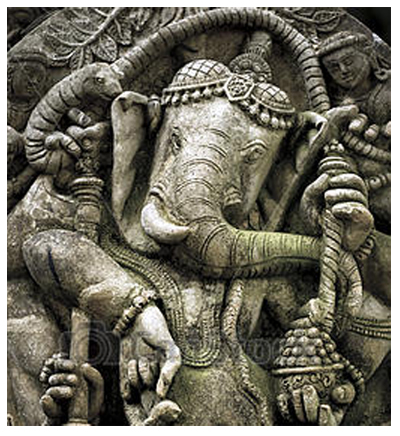 The mechanistic model is so successful that it ends up substituting for the actual universe, however. But it’s only a model and not the real thing. We should not claim to understand everything about the universe, while it is both arrogant and extremely limiting to put the universe in a simplistic epistemological box for our convenience. This forced reduction wipes out an incredible portion of the complexity of reality.
The mechanistic model is so successful that it ends up substituting for the actual universe, however. But it’s only a model and not the real thing. We should not claim to understand everything about the universe, while it is both arrogant and extremely limiting to put the universe in a simplistic epistemological box for our convenience. This forced reduction wipes out an incredible portion of the complexity of reality.
Actually, it is not the discovered basis of science that dictates a strictly reductionistic picture of matter, but a set of tacit assumptions. It’s not important to know who postulated these—we follow them unthinkingly. Those assumptions are not shared by all of the world’s greatest scientists, yet they have somehow permeated popular thinking about science. Misleading assumptions include the following:
- Objective truth comes only from lifeless mechanisms.
- What we experience in our mind (the inner world) is unrelated to physical matter (the outer world).
- Beauty plays no role in the structure of the universe. The intuition that something profound is occurring in a great work of art is meaningless.
- Ornament is unrelated to function.
These assumptions should be dropped because they are not provable. They are akin to the religious dogma of sects. Furthermore, they hinder our full enjoyment of life. The mismatch between reductionistic scientism and our deepest feelings causes us to ignore the value of great emotional experiences such as a piece of music, art, architecture, or contact with a living being. Our interaction becomes only a fleeting impression, and we soon forget about its impact because we cannot explain it. We dismiss the feeling of connectedness as a romantic invention, instead of valuing it as physical reality.
Losing Essential Life Experiences
Reducing life invalidates our most precious life experiences, which seem so very real to us while they are occurring. Altruism, art, compassion, faith, feeling, human dignity, and love are all undermined. Humankind is in this way cut off from major sources of emotional nourishment and healing. Incredibly, a portion of the world’s population has accepted this severe restriction on its life experience, without protesting or questioning it. Complacent people embrace their drastically diminished humanity because they believe it leads to material comfort.
 In architecture, the separation of ornament from function has profound implications, because it comes from, and supports, a mechanistic worldview. Yet, as Alexander shows at great length in The Nature of Order, function is in fact inseparable from ornament. In a universe where sensual delight connects us to matter, function links to ornament in an essential manner. By eliminating ornament, the world followed a dogmatic diktat without any logical basis—only because some fool said so!
In architecture, the separation of ornament from function has profound implications, because it comes from, and supports, a mechanistic worldview. Yet, as Alexander shows at great length in The Nature of Order, function is in fact inseparable from ornament. In a universe where sensual delight connects us to matter, function links to ornament in an essential manner. By eliminating ornament, the world followed a dogmatic diktat without any logical basis—only because some fool said so!
An example of a non-mechanistic phenomenon is how color affects us. Even in a child’s painting, the colors can provide delight. In rare cases, the colors in a painting will cohere to produce “inner light”, which affects us profoundly. According to Alexander, “inner light” in a painting is something far more than a coherence that resonates with our perceptual nervous system. This is not a psychological phenomenon confined to a thin surface film of pigment, and to the neurons inside our head. “Inner light” somehow connects to a latent unity of matter itself. Sensitive painters, musicians, and architects insist that this is what happens, and that it is more than just cognition occurring in brain circuits.
A new and useful model of physical reality needs to explain such observed phenomena of connecting. This model is eminently practical because it helps us to construct a built environment made of living structure. And that benefits our health directly. In traditional societies, a system of deep and shared values validated the transcendental value of certain experiences of color. But this connection cannot be explained by science, and is therefore neglected nowadays (at least by the intelligentsia). On the other hand, the commercial sector in our society knows about color’s strong connective power. This knowledge is often misused to manipulate people into using products, yet relies upon the emotional connection.
Living structure in architecture is inseparable from biological life, yet the rich colors of nature are banned, again by self-imposed restrictions that our society has accepted through its dogmatic education, which it has internalized and forgotten about. The middle class is terrified to create house interiors that are not some shade of white (but not poor people!). The architectural élite, meanwhile, fearing the retributions of committing apostasy, dares not veer from the gray of putrefying flesh. Mainstream architectural culture continues its relentless devastation of the connective potential of surfaces, preferring grays and browns reminiscent of death, decomposition, and pathologies of the brain and eye. People are denied the emotional nourishment they need from color in architecture, and make up for it from consumer goods. Never mind that color is one of the proven components of biophilia—that fact has so far made no difference.
The Religious Dimension
How do we break out of the intellectual straightjacket in which we find ourselves, which dismisses our living perceptions, and forbids us from connecting viscerally to our surroundings? Throughout history, building activity connected matter with spirit, but only up to the 20th Century in the industrialized world. This often occurred in the context of religion. The greatest works of art and architecture were created within a cosmology where the self is related to matter. Within a mystical-religious context, a person’s direct experience of life helps them to connect to a great work of art, i.e. one that has the power to get under the skin of reality. And, in so doing, it embraces life and nature. This idea was formerly accepted and understood as a perfectly natural occurrence. During deeply religious times, the connective process made sense for all acts of human creation.
Read more in New English Review:
• Hope Not Hate‘s 2019 Report on the Right and Conservatives
• Intuition and Virtue in Miguel Delibes’ Las Ratas
• Plumbing the Depths
Yet it is not the religious nature of artworks that is essential, even though many great works of art are religious in origin, but rather the worldview in which they were conceived. Secular works of those earlier eras also possess connective qualities, which are independent of any particular religious belief. The accepted view then—never discussed or doubted—was that the material essence of the universe could be grasped. We could connect to something beyond the mundane by making beautiful and useful things. Creation was understood as a spiritual exercise leading to union with something greater than oneself.
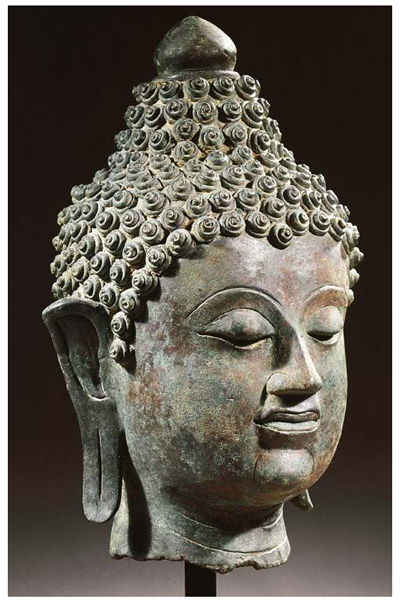 A condition for being able to connect through beauty is to abandon one’s selfishness and ego. This is automatic in a world of faith, but impossible for design that serves power (hence inconceivable for iconic architecture nowadays, driven as it is by abstraction linked to power). A religious traditional craftsman would make something “for the glory of God,” not for personal fame, glory, or wealth.
A condition for being able to connect through beauty is to abandon one’s selfishness and ego. This is automatic in a world of faith, but impossible for design that serves power (hence inconceivable for iconic architecture nowadays, driven as it is by abstraction linked to power). A religious traditional craftsman would make something “for the glory of God,” not for personal fame, glory, or wealth.
This is not simply nostalgia for the past. Equally important are certain art objects, artifacts, and architecture of more modern times. A few great works, such as Hassan Fathy’s adobe settlements (Egypt), Geoffrey Bawa’s serene structures (Sri Lanka), and Josef Plecnik’s delightful innovations (Austria, Czechia, Slovenia) approach the degree of life of older creations, even though they were not subject to religious inspiration. It’s because they followed the same conditions for the creation of beauty as practiced in much older societies. These works of art act as catalysts to connect the self with the universe. Examples that establish a degree of unity can be either large or very modest in scale; they possess humility and a rough, not shiny, quality. (Large buildings covered in shiny polished metal seem alien and repel us rather than invite us to connect.)
Steps to Generating Living Structure
Generating living structure requires a sequence of stages, where each creative step checks itself against a larger coherent framework. Nothing with life can be created in one step as a stroke of genius, without adjustments and feedback. It helps the creator to see the larger wholeness as a link between matter and the self, so as to guide the design steps in the right direction. Otherwise, the process becomes mechanical and trivial. The older mystical traditions, a profound belief in life, or a belief in God had a very practical benefit because they helped an artist focus on wholeness during the design process.
The relatedness we seek is confirmed by direct experience. There is hope of re-discovering the method again, as long as we trust our deepest feelings. The explicit design techniques presented in The Nature of Order help to endow buildings with life. Applying Alexander’s tools certainly improves the final product, but will not give optimal results in isolation of the larger conceptual framework that he has outlined.
We want to identify conditions for creating new buildings once again that are profoundly connected to the human self. The path towards attaining living structure is nearly invisible in our time, however, because of prejudices against the connective state as a deeply emotional experience. If we cannot even perceive something, then how can we hope to create it? Nevertheless, we have to be careful of the dangerous promises of newly available religious mysticism. Fundamentalist religions and sects offer us false hopes, because they are intolerant and divisive, and can turn against beauty and life. They are often obsessed with control and power hence they also obscure the path to enlightened creation.
Meaning That Anchors Us to The Universe
Alexander insists that we need to find something akin to a new faith for our time, perhaps a “new form of God” for some of us, and a new certainty that justifies the transcendent connection of the self to the universe. A starting point for such faith might be to admit that we know only a tiny fraction of what exists, leading to an appreciation of the awesome and hidden potential of the universe. A lukewarm imitation of appearances or faith is not enough to achieve this necessary state of connectedness. And our new awareness and sensitivity have to be rooted in truths consistent with the 21st Century, and consistent with biology and physics.
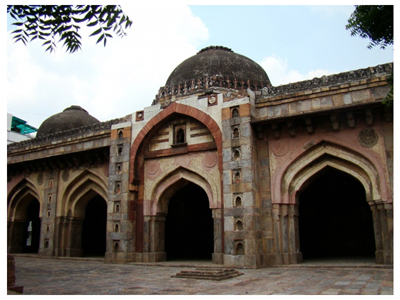 For some individuals who are already religious, they can take a shortcut to creating living structure. This does not apply to all persons. Empirical humanists who value life are also in a good position to seek and achieve the same connective qualities. It is unrealistic for us to expect to recapture the conditions for creating living structure as practiced by older religious societies, because we have changed too much. There’s no going back in time. We can learn useful points to help in the creative process, but the way forward is not by trying to copy something we hardly understand.
For some individuals who are already religious, they can take a shortcut to creating living structure. This does not apply to all persons. Empirical humanists who value life are also in a good position to seek and achieve the same connective qualities. It is unrealistic for us to expect to recapture the conditions for creating living structure as practiced by older religious societies, because we have changed too much. There’s no going back in time. We can learn useful points to help in the creative process, but the way forward is not by trying to copy something we hardly understand.
This vision of a living world should parallel, but not imitate, traditional forms of mysticism. The feeling and depth of understanding has to be comparable to the spiritual devotion and love of humanity that people experienced in past centuries. We must reach the same degree of emotional depth. Meaning coming from life then assumes priority in our personal worldview. Such “meaning” is the opposite from the term as used in contemporary architectural discourse, where it denotes the imitation of images that support some intolerant design ideology. That represents a self-referential cycle, which never attaches to life and the nature of the universe. Those images draw our attention away to some abstract mental space where we are no longer grounded in reality.
Is Beauty, Then, The Purpose of Life?
Why not? The proposition makes a lot of sense. By contrast, the mechanistic view of life and humankind is technically useful, but ultimately meaningless. Traditional religion, although its rituals are man-made, provides an antidote to thinking that life is pointless. It helps to link the words “beauty” and “religion” in this larger context. If matter were truly mechanistic, then the approach to understanding the universe put forward by Alexander is only palliative; it would not change a basic reality of emptiness.
There is more at stake than feeling desperate and empty. The ongoing rift between the mechanical-material world and our perception of life and self is destroying our sense of self-worth. It is consequently destroying us, and also whatever we make. It has diminished humanity into a manipulated mass of consumers fast destroying the earth. Our architecture today is spiritually barren, the most it has ever been in human history. What “beauty” comes out of our mechanistic cosmology is arbitrary, and that act eventually turns into pretention. Art turns into the cynical fabrication of artificial images.
Profound works hardly exist in recent architecture. By forcing themselves into a tiny intellectual box, mainstream professionals have forgotten how to create living structure. Of course, hundreds of thousands of new buildings with living structure are being erected every day, but those are ignored by dominant architectural culture. Owner-built neighborhoods and modest buildings that today follow local and vernacular traditions are never shown in the media, nor featured in architectural magazines, because those are so far removed from the “official” styles. Architects making an intentional effort to capture spirituality either miss it altogether, or achieve results that are too soft, too self-conscious, and not profound enough to reach any genuine depth. Those architects may have good intentions, but their works are governed by style, image, appearance without emotion, and are consequently without substance.
In conclusion, Alexander insists that life does have meaning, and its point is to achieve union with the universe through beauty. Architecture that routinely fails to create beauty is irrelevant to life, and to the world’s larger order. It ultimately denies human beings their humanity.
Postscript: For Some Persons, None of This Is Supposed to Exist
During the lecture, I mentioned the extremely narrow world that architects inhabit mentally. I argued that their education might preclude them from grasping the concepts presented here.
For many architects, the connected world of beauty simply doesn’t exist. Therefore, a student is highly unlikely to learn about it in architecture school. The “official” conception of beauty links abstraction to power, which is the opposite of what Alexander describes. We are not dealing with “two types of beauty”, but rather counterpose a false beauty that manipulates the global population in order to benefit a tiny élite, versus genuine beauty linked to life.
We would wish for more beauty in the world. If we believe that we can convince dominant architectural culture to supply it, then we need to address the existing decades-long schism in worldviews. Otherwise, we are wasting our time trying to persuade a society that already judges what is “beautiful” even though it has no life.
This essay was delivered as a lecture via the Internet on 28 March 2019 to the Building Beauty Program, Sorrento, Italy.
I thank John Smylie for helpful remarks on this material.
BIBLIOGRAPHY
Christopher Alexander (1982) “Lecture by Christopher Alexander at Harvard”, presented on 27 October 1982, Patterns Digital Library, Architexturez. https://patterns.architexturez.net/doc/az-cf-177389
Christopher Alexander (2004) The Nature of Order, Book 4: The Luminous Ground. Center for Environmental Structure, Berkeley, CA. https://www.patternlanguage.com/natureoforder/overview.htm
Christopher Alexander and Peter Eisenman (1982) “Contrasting Concepts of Harmony in Architecture: The 1982 Debate Between Christopher Alexander and Peter Eisenman—An Early Discussion of the “New Sciences” of Organised Complexity in Architecture”, Patterns Digital Library, Architexturez. https://patterns.architexturez.net/doc/az-cf-172574
Nikos A. Salingaros (2015) Biophilia and Healing Environments. Levellers Press, Amherst, MA, and Terrapin Bright Green LLC, New York, NY. https://www.terrapinbrightgreen.com/report/biophilia-healing-environments/
Nikos A. Salingaros (2019) “The Legacy of Christopher Alexander: Beauty and the nature of matter”, videolecture given over the Internet to the Building Beauty Master’s Program, Sorrento, Italy, 28 March 2019. Nature of Order Seminar Series. https://vimeo.com/328174786
Alfred North Whitehead (1920) “Theories of the bifurcation of Nature”, Chapter 2 in The Concept of Nature. Cambridge University Press, Cambridge, UK, pages 26-48. https://brocku.ca/MeadProject/Whitehead/Whitehead_1920/White1_02.html
«Previous Article Home Page Next Article»
__________________________________
Nikos Angelos Salingaros, PhD is an internationally recognized Urbanist and Architectural Theorist. Professor of Mathematics at the University of Texas at San Antonio, he has held guest professorships in Architecture at the Delft University of Technology, Tecnológico de Monterrey, Querétaro, Mexico, and Università di Roma III. His books Algorithmic Sustainable Design, Anti-Architecture and Deconstruction, A Theory of Architecture, Design for a Living Planet, Biophilia and Healing Environments, Principles of Urban Structure, and Unified Architectural Theory are translated into many languages. Dr. Salingaros won the 2019 Stockholm Cultural Award for Architecture, and shared the 2018 Clem Labine Traditional Building Award with Michael Mehaffy.
Follow NER on Twitter @NERIconoclast
- Like
- Digg
- Tumblr
- VKontakte
- Buffer
- Love This
- Odnoklassniki
- Meneame
- Blogger
- Amazon
- Yahoo Mail
- Gmail
- AOL
- Newsvine
- HackerNews
- Evernote
- MySpace
- Mail.ru
- Viadeo
- Line
- Comments
- SMS
- Viber
- Telegram
- Subscribe
- Facebook Messenger
- Kakao
- LiveJournal
- Yammer
- Edgar
- Fintel
- Mix
- Instapaper
- Copy Link







